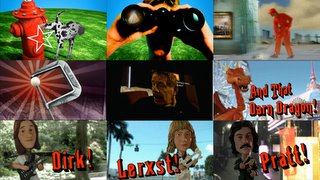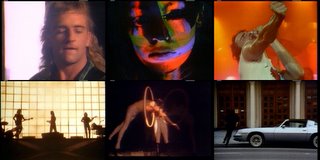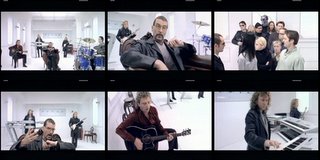Little Axe - Champagne & Grits
Champagne & Grits
2004 Real World/Narada Records
Produced by Skip McDonald and Adrian Sherwood
Perfomers:
Skip McDonald - everything that isn't by anyone else (but mostly various
guitars, keyboards and vocals).
Keith LeBlanc - drums
Doug Wimbish - bass
Alan Glen, Dave Foster - harmonica
Prithpal Rajput - tabla
with featured vocal performances by Bernard Fowler, Shara Nelson, Chris
Difford, Ghetto Priest and Junior Delgado
various others also provide any number of noisy bits o' fun
When I really began to get into the wealth of industrial-dub and free-form funk escapades of On-U-Sound recordings, their flagship houseband Tack>>Head had appeared to have imploded. I was wrong. They (Skip, Doug and LeBlanc and almost always with Sherwood) had a penchant for reforming with various rotating players in a chain of new projects under different names with different foci.
That is where Little Axe came in. This was (and is) guitarist Skip McDonalds vehicle to use his bandmates and quite a few friends to rework the blues into a truly inventive framework. Unlike many musical cross-breeding projects (think Deep Forest or anything produced by Jonathan Elias) this works upon hearing, even though on paper the idea of old school blues with lots of dub reggae and ethnic flourishes sounds like disaster. From the debut, The Wolf That House Built to their latest, it has been always listenable and good ear food. Where the first three albums had stronger electronic and dub underpinnings, this is a more stripped down affair, and is more rewarding for the departure.
McDonald has now fully stepped into the mantle of "being" LA, even if it still retains the character of the On-U-Sound posse (which would be nigh impossible to ignore given the line up), with some of his most organic and rootsy playing ever. From the spartan and breezy acoustic instrumental Cloud to the backwards Nat-Steel and dobro (at least I think its dobro...there is a lot of processing on some of the tracks so one can only guess what stringed instrument is making the cool noises) on Will I Ever Get Back Home Again, his phrasing is so funky and sweet. Most of the cuts have LeBlanc and Wimbish laying down simple and to the point grooves that are more infectious than Dengue and give the music a heat like a humid summer evening on the gulf coast.
The vocal variety is a bit of a new development and it really works with the different colors of tunes. Bernard Fowler (Tack>>Head, Rolling Stones) works his fiery growl on the opener Grinning in Your Face, Will I Ever Get Back Home Again and on the swaggering Living and Sleeping in a Dangerous Time. Shara Nelson made her name initially as the featured vocalist with Massive Attack, and her contribution to Say My Name harkens back to that period. Her voice still has a crystalline melancholy and subdued anger that works perfectly.
Like Massive Attack, whose regular use of reggae crooner Horace Andy is commendable, LA bring in rising star Ghetto priest as well as one of the last recordings of the late, great Junior Delgado. The latter provides an erie performance on Go Away Devil that just as he sings will make your "blood run cold". The oddest contribution has to be from the unexpected presence of one half of the core writing team from Beatlesesque UK popmasters Squeeze, Chris Difford. His intrinsically British delivery on one of the more musically upbeat selections, All in The Same Boat (whose lyrics reflect Diffords playful and morose absurdism) is a fun detour.
A good rootsy, spaced out trek for the listener.
You might like this if you like:
Massive Attack - Protection
Strange Parcels - Disconnection
Chris Whitley - Rocket House
various dubbish Bill Laswell and Jah Wobble excursions
Sly & Robbie - Stripped to the Bone









